Seven Sustainable Exhibits to See in 2022
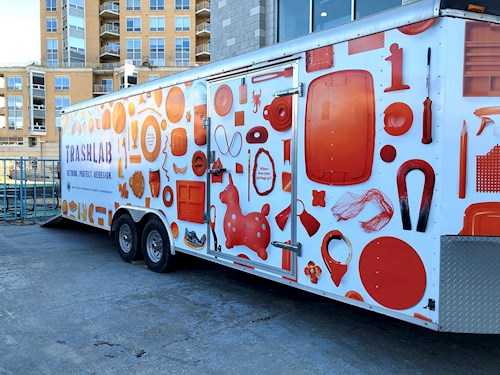
Exhibits are a great way to learn about sustainable issues in an interactive way. Planet Aid has assembled a list of seven sustainable exhibits to see in 2022.
Exhibit 1: Trash Lab
Madison Children's Museum
Madison, WI
"Rethink! Protect! Redesign!" are the imperatives that cry out to Trash Lab exhibit-goers in Dane County, WI.
- Rethink how to use less trash.
- Protect our environment by managing our resources.
- Redesign a world where landfills are not thought of as trash disposal sites but sites where trash is transformed.
The mobile exhibit, created by the Dane County Department of Waste & Renewables in collaboration with Madison Children's Museum, explores the social justice, economic, and environmental effects of waste. Housed in a 27-foot-long repurposed cargo trailer, the Trash Lab exhibit features more than 10 playful interactive stations. In addition, the exhibit offers engaging stories, photo, and video footage as well as compelling data about waste and an inviting whimsical exterior perfect to invoke the imagination of all ages
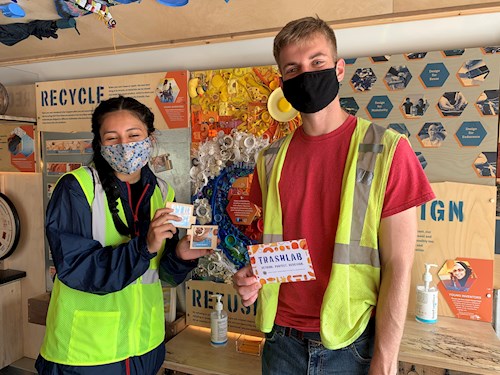
The exhibit further personalizes the understanding of local visitors by connecting the local experience to local and global outcomes. The objective is for visitors to take account of the implications of the waste they produce; how landfills work, and the new opportunities for sustainable solutions.
When not traveling, Trash Lab is permanently housed at the Dane County landfill, where it is expected to welcome hundreds of visitors annually as part of Dane County's public tours of the landfill and on-site renewable energy plant.
Exhibit 2: Power Up
Maryland Science Center
Baltimore, MD
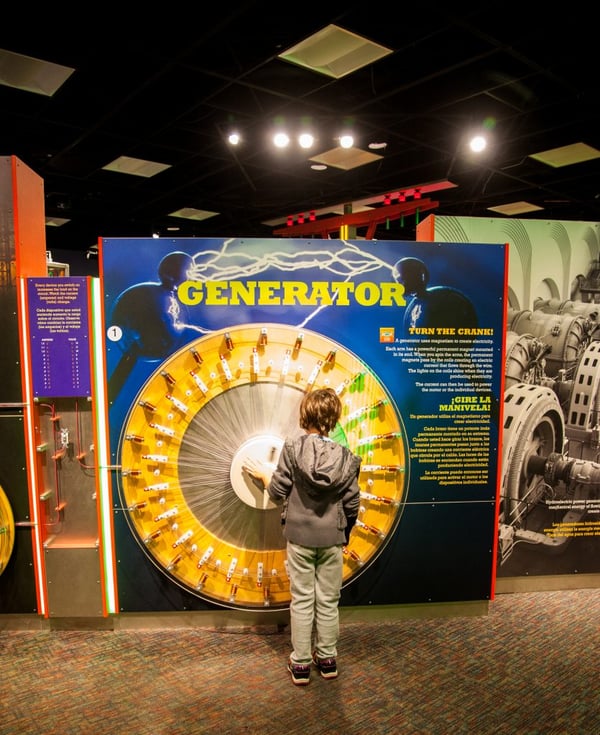
The Power Up exhibit resides at the Maryland Science Center in Baltimore, Maryland. The exhibit explores questions about how electric power is generated and used in today's society.
Visitors are challenged to generate electricity, build circuits, wire the grid from the power plant to the home outlet, explore cutting-edge fuels and try to maintain the electrical grid for an entire metro area. The exhibit also helps visitors to harness the power of water to make hydroelectricity.
You can download the free Power-Up app from iTunes.
Exhibit 3: Recycling Truck
Children's Museum of Findlay
Findlay, OH
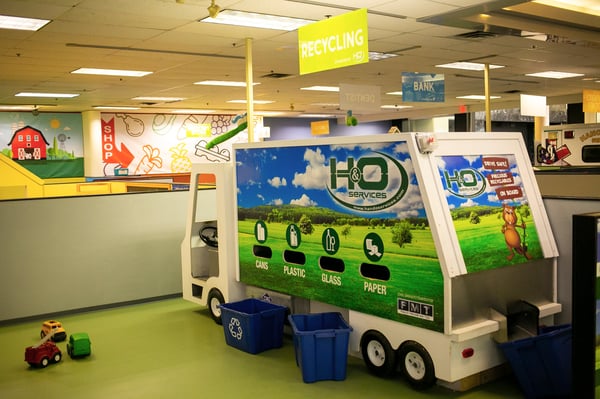
The Recycling Truck exhibit at Children's Museum in Findlay, Ohio is a child-sized recycling truck. The exhibit, which emphasizes play, lets kids pretend to drive and operate the lights on the truck, and more importantly, kids can sort recyclables using the sorter in the rear of the truck.
Another fun feature of the exhibit is the recycled toys inside the truck. Seeing the new items made from discarded waste material enforces the lesson of having a circular waste stream that helps to keep landfills manageable—not overflowing with unnecessary waste.
Exhibit 4: Pacific Coral Reef Exhibition
ABQ BioPark Aquarium
Albuquerque, NM

When in Albuquerque, New Mexico, take the opportunity to visit the ABQ BioPark Aquarium's Pacific Coral Reef exhibition. The walk-through exhibit is full of colorful fish, which includes 200 fish from 75 different species from the Pacific Coral Reef.
Coral reefs are unique ecosystems of plants, animals, and their associated geological framework. All things considered, at 0.5%, coral reefs only cover a small percentage of the earth's surface. However, coral reefs are home to an estimated 25% of all marine species. The ABQ Bio Park Aquarium offers a valuable look at the importance of ocean ecosystems as well as the impact of climate change and pollution in the oceans.
Exhibit 5: Future Energy Chicago
Museum of Science and Industry Chicago
Chicago, IL
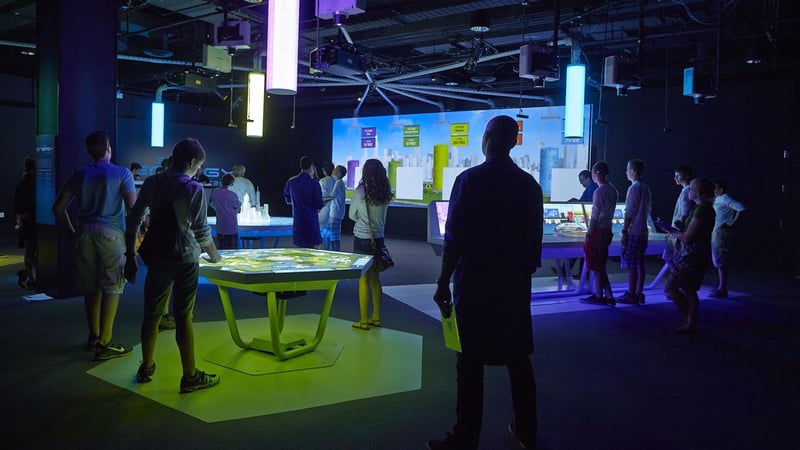
Have you ever had the chance to define the way a city's power grid runs? If you are like most of the population—probably not! But, what if you could? The Future Energy Chicago exhibit lets you observe how Chicago uses energy now, and tasks exhibit-goers to reinvent Chicago's energy footprint.
The challenge is to think out of the box, channel your inner Elon Musk to design green vehicles. However, green vehicles are just one part of the equation; visitors will have to tighten up their thinking caps and step into an urban planning role to reimagine roads, homes, transportation, and more.
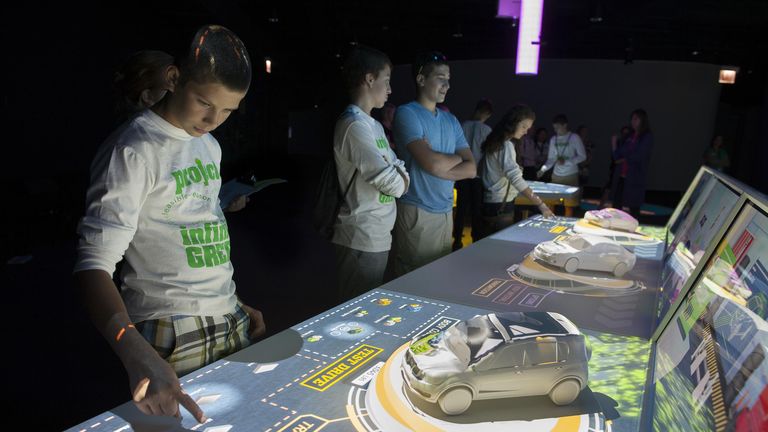
The lynchpin of Future Energy Chicago is an interactive Simulation Lab, which engages teams in a collaborative series of mini-games. Teams will work together to bring forth innovative ideas to redefine Chicago's energy landscape while working to maximize their energy efficiency and manage the trade-offs of their choices.
Exhibit 6: Living Roof
California Academy of Sciences
San Francisco, CA
Imagine walking through a park with rolling hills and fields that are home to scores of wildlife and insects. Then imagine this same park is part of the structure of a building. California Academy of Sciences has a number of exhibits that check off the qualifications for sustainability, but one of the unique offerings is their Living Roof exhibit.
The 2.5-acre roof is mostly covered with greenery, and it serves as insulation by reducing the energy required for heating and cooling the building. The roof has fields of flowers and offers butterflies, birds, bees, and other animals a ripe oasis for food and shelter.
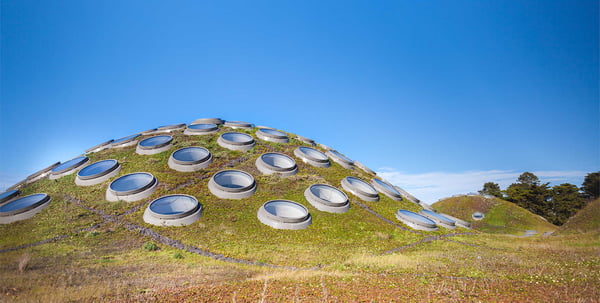
The Living Roof also has weather stations, which monitor wind, rain, and changes in temperature. This technology serves to inform the building's automated systems and skylights. In addition, it keeps the academy's rainforest exhibit temperatures just right.
Perhaps the biggest distinction for the California Academy of Sciences is its world-class distinction as the first Double Platinum LEED-certified museum and the largest Double Platinum building on the planet.
Exhibit 7: Our Broken Planet: How we got here and ways to fix it!
The Natural History Museum, London
London, UK

If the California Academy of Sciences' Living Roof exhibit was a best-case scenario of sustainability, London's Natural History Museum's display "Our Broken Planet: How we got here and ways to fix it!" is probably a worst-case. However, it's not without hope. The display tackles hard questions and invokes accountability.
Located in the Jerwood Gallery of the museum, the display opened in May of 2021 and has three parts, which opened in stages.
1. Eating the Earth: In this portion of the display, visitors are alerted to the perilous dietary habits of the world's wealthiest nations and show how the desire for all kinds of alternative seafood is putting the ocean's ecosystem at risk.
2. Nature for Sale examines the rare materials and natural resources used in almost everything we use. It also considers the need for a rethink of these usages due to dwindling resources.
3. Climate Emergency studies the effects fossil fuels have on rising temperatures, wildfires, and other climate issues. This final portion of the exhibit asks, "How can we create a greener, cleaner future and start to heal the planet?"
The exhibit runs through late summer in 2022. If you cannot get to London to experience the Our Broken Planet exhibit, the museum has plenty of resource programs on its YouTube page
